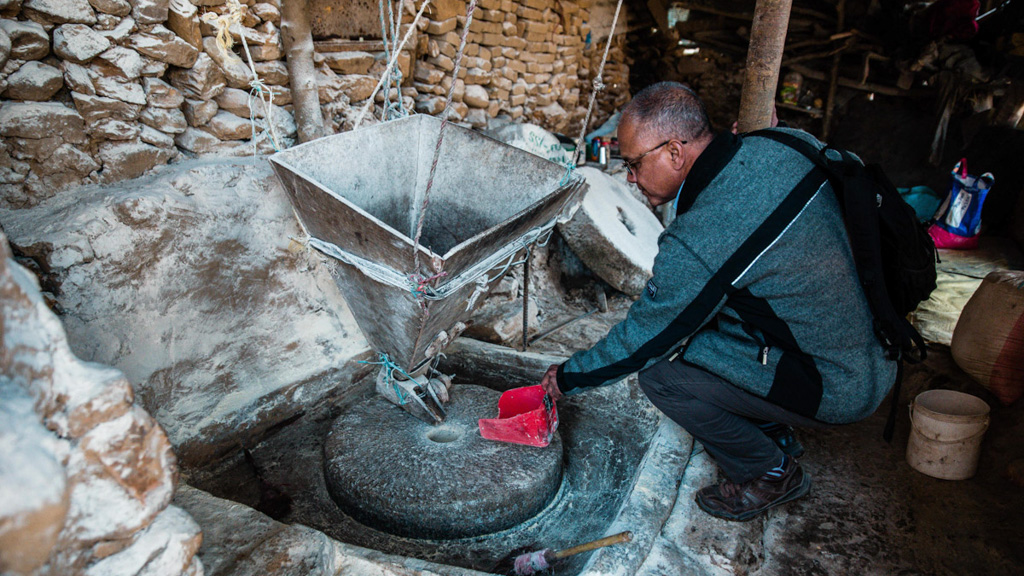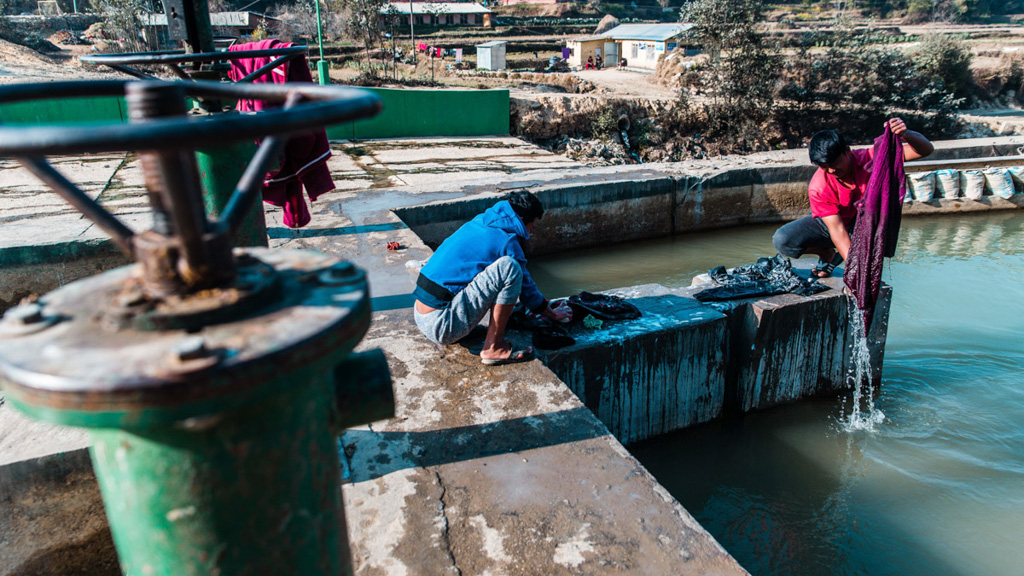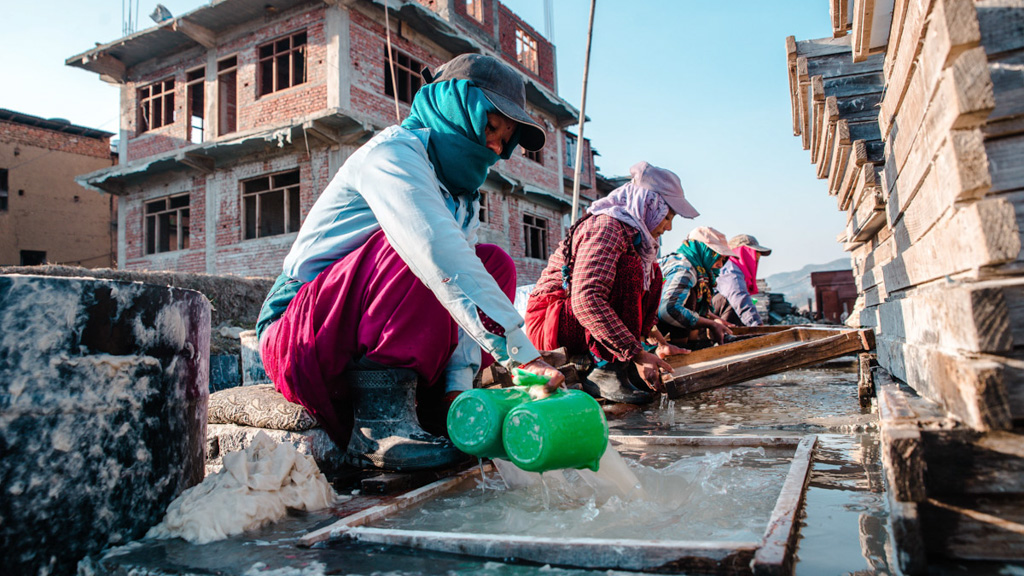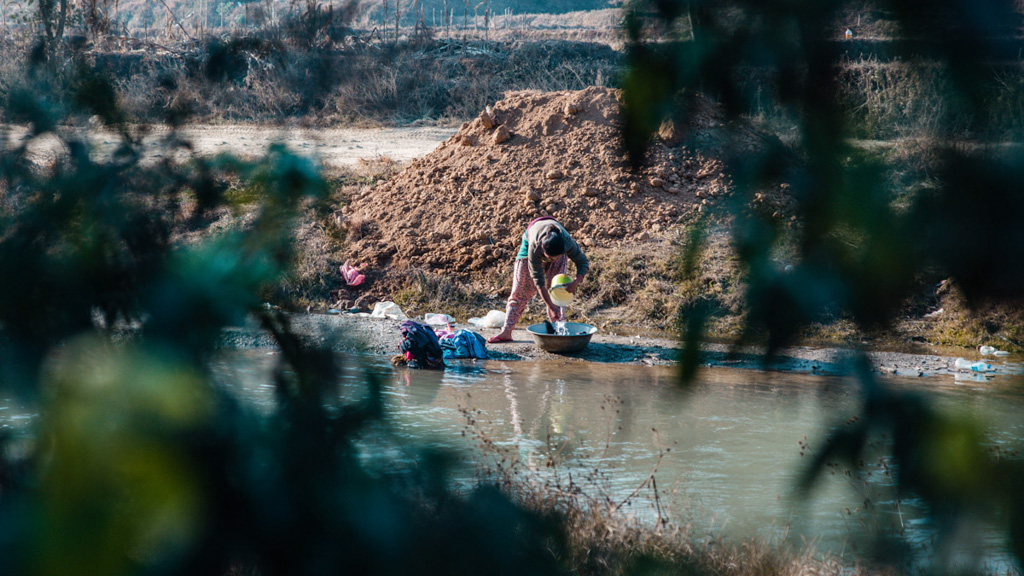Through Nepal’s Integrated Watershed Management Activity, Suman Basnet aims to make more water available for the land that he loves.
Suman Basnet is sore. He spent his weekend running the Annapurna 100, a 50-kilometer trail race in western Nepal. The race is a demanding one, climbing all the way up to 3,500 meters and back down again, all at the base of the Himalayas.
"I’m very proud, very satisfied, but very sore at the moment," he laughs.
It’s the mountains themselves that drew Basnet back to Nepal after he completed his undergraduate studies in electrical engineering. "Nepal is my home country," he says, “but I love to work in the hills and the mountains — enjoying the beauty that exists in Nepal.” Basnet has spent the last 30 years working in the renewable energy sector of this country he loves. Today, he serves as the senior strategic advisor for the Integrated Watershed Management Activity, an effort of USAID’s Sustainable Water Partnership (SWP).
Though it seems unlikely in a country that has over 6,000 streams and rivers, Nepal actually suffers from water scarcity. "We have water springs, but because of deforestation, because of urbanization, overpopulation and overgrazing — these springs tend to dry up," Basnet says. These issues are compounding the country’s overall lack of water infrastructure and effective water management and diminishing water availability, which in turn makes it even more imperative to efficiently use what water is available. "Being able to address that issue — having sufficient water of the right quality at the right time — becomes very important for farmers in rural Nepal," Basnet says.

Nepal native Suman Basnet, senior strategic adviser for the Integrated Watershed Management Activity, inspects a water mill. These mills traditionally have wooden paddles, but many are being replaced by modern steel turbines, dramatically increasing efficiency. Photo: Pramin Manandhar
And it’s not only farmers who need water security. As USAID/Nepal’s Social, Environmental, and Economic Development (SEED) office recognizes, water is the most important natural resource underpinning Nepal’s overall economic growth. In fact, water plays a key role in every activity the SEED office funds. But until recently, coordinated actions on water security among these projects were few and far between.
That’s where SWP comes in. The Integrated Water Management Activity helps SEED activities in two Nepali watersheds — the Rangun Khola and the lower Karnali — cooperate on water security-related issues, magnifying their impact through integration.
"If two or more projects could come together in areas of mutual interest and work together, and if this is done well, then there could be a bigger impact," Basnet says. "Two plus two could make five."

Two Nepali men wash clothes on a canal just downstream of a hydroelectric dam. Photo: Pramin Manandhar
Using a combination of independent research and communication with the activities, Basnet and his team foster an environment conducive to collaboration. “We have been getting people together and making them talk about what they are doing related to water,” Basnet says. “Then we try to stimulate a discussion on which areas could be suitable for integration activities.”
For example, many current SEED activities are collecting data and producing information about the area’s water quality and availability. Others are promoting disaster-risk reduction with early flood warning systems. By coordinating shared information and tools among projects, SWP can reduce the collective effort of SEED projects while maximizing their overall benefits.
Implementation itself, however, is left to individual activities. “We are not the experts in water security,” Basnet explains. “That expertise lies with the different projects. We’re actually process facilitators.”

Women use water for making Lokta paper, a traditional Nepali paper. Many small industries in Nepal rely on water use. Photo: Pramin Manandhar
“The response has been very, very enthusiastic,” Basnet says. “We’ve been able to really engage with our partners, not forcing them to integrate against their will, but generating enthusiasm for integration.”

A Nepali woman uses a stream to wash clothes. Photo: Pramin Manandhar
SWP’s Nepal activity is fairly small, but that’s by design. “We want to start small and specific so that we have results. But that’s not the end,” says Basnet. “The end is that we can slowly scale this up so that it really has a national impact in the long run.” Basnet hopes that the activity will eventually expand its work to include external partners at all levels, both in government and the private sector. “This could eventually really help Nepal improve its water security situation,” he says. And that will mean more available water for the country he loves.


